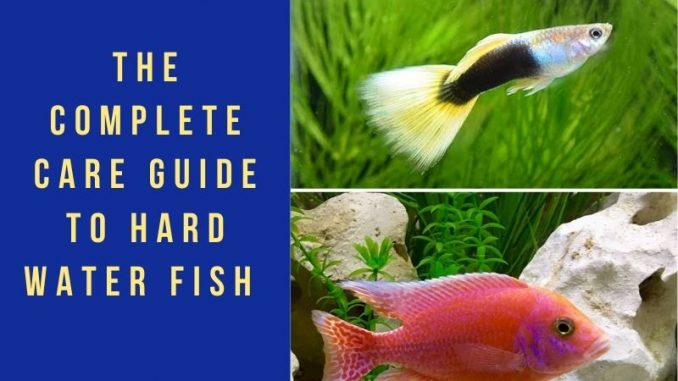
Maybe you live in an area with hard water. Maybe you don’t want to bother with water softeners. Or maybe you’re just looking for fish that can handle the water that comes out of your tap.
The truth is that aside from certain fish that won’t breed unless they are in soft water, or rasboras, and some tetras that thrive in softer water, most aquarium fish will adapt quite well to hard water, even if they are accustomed to softer water in their natural habitat. And the reality is that many species that live in soft water in the wild are actually bred in captivity in hard water, so they can handle the chemistry.
In this guide, I will explain the basics of hard and soft water and the implications of each. I’ll discuss some of the benefits of hard water, which are related to some of the challenges of maintaining a soft water tank.
Finally, I’ll go into some care details for specific fish that do well in hard water.
Hard Water Fish Facts & Overview
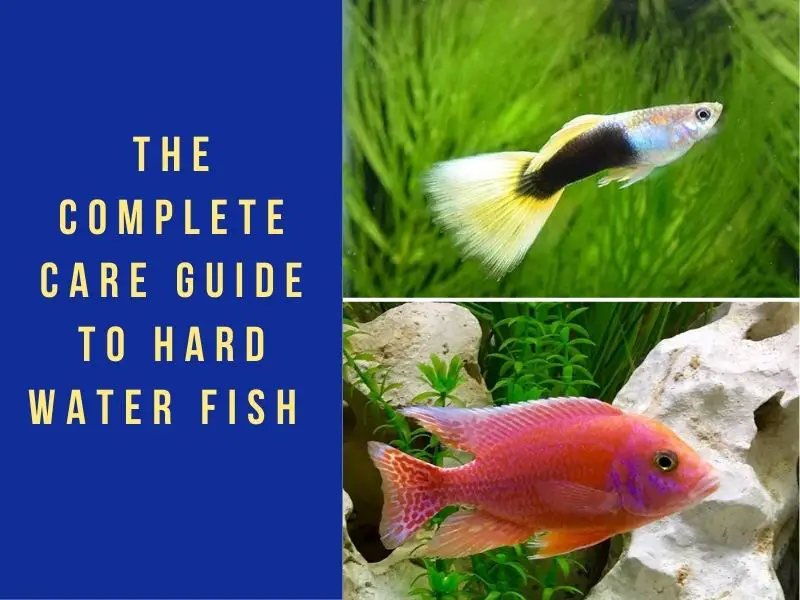
| Category | Rating |
| Care Level: | Easy to medium |
| Temperament: | Peaceful to aggressive |
| Color Form: | Various |
| Lifespan: | Up to 20 years |
| Size: | 2-15 inches |
| Diet: | Species dependent |
| Family: | Poeciliidae, Osphronemidae, Cichlidae, and others |
| Minimum Tank Size: | 20-30 gallons |
| Tank Set-Up: | Freshwater |
| Water Hardness: | 10-30 DH (depending on species) |
I’ll start with a simple explanation of hard water that will satisfy those of us who aren’t chemists. Hard water has a high mineral content, specifically calcium and magnesium. Hard water is measured by the amount of dissolved minerals it contains.
General Hardness (GH) measures calcium and magnesium; Carbonate Hardness (KH) measures alkalinity to determine the amount of carbonate and bicarbonate ions. Carbonates provide water stability, which is necessary for aquatic life to thrive, so a high KH is good for fish.
Degree of General Hardness (DH) is used as a hard water measure for aquariums, as is parts per million (ppm). One dH equals 10mg/L CaO, which is the same as 17.85 ppm.
That’s as scientific as I’ll get in this guide. If you really want to get in the weeds, there are many spirited discussions on various aquarium hobby blogs. For the purposes of our discussion, you really need to know these details:
- Soft/very soft: dH: 0-6; ppm: 0-100
- Slightly hard/hard: dH: 6-25; ppm 101-449
- Very hard/liquid rock: DH: 30 and higher; ppm: 450 and higher
All the fish we are discussing today do well in the slightly hard to hard category. As I mentioned before, most fish are bred in captivity in water that is likely on the hard alkaline side of the water spectrum, so chances are your fish will do fine in hard water.
Some common hard water superstars include:
- Livebearers such as Guppies, Mollies, Platies, and Swordtails. For detailed information, check out my guide to Livebearers.
- Paradise Fish. For more information, read my article on Paradise Fish.
- African and some Central American Cichlids. For more specifics, check out my Cichlid Guide.
- Brackish fish such as Archers, Monos, and Scats. Read my article on Brackish Fish for more details. I did want to note that brackish tanks have their own salinity requirements, and freshwater and saltwater fish will not thrive in brackish environments, regardless of the DH or ppm content.
In this guide, I’ll focus on Livebearers and Cichlids, although in addition to the four superstars mentioned above, there are many more aquarium fish that can handle hard water.
Why Hard Water?
There are a number of reasons to choose hard water over soft water. First of all, unless you have soft water coming out of your tap, which is unlikely, it costs money to make hard water soft. Not everyone can afford the expense and time commitment of reverse osmosis filters.
Furthermore, water softeners that you use in your home for your appliances are absolutely inappropriate and ineffective for your aquarium.
Next, hard water is better for your fish, as I demonstrated in the KH (Carbonate Hardness) calculation. pH stability is important for fish health, as instability can lead to fast and harmful acidic spikes. Soft water is more unstable, and therefore riskier for your aquatic friends.
Soft water is also extra work for the hobbyist, as it requires more frequent pH testing, plus the use of chemical buffers.
Next, filter bacteria are most effective in alkaline, hard water, so if you have a soft water tank, you may need an alternate filtration system.
Finally, some fish, such as the Livebearers included in this guide, are far more susceptible to disease in soft water.
Overview of Livebearers
Livebearers found in home aquariums overwhelmingly belong to the Poeciliidae family. Some of the most popular in the aquarium hobby are guppies, mollies, platies, and swordtails. The Poeciliidae family is a varied group with many species that originate throughout North, Central and South America.
Livebearers get their name from their method of breeding–they carry their eggs inside and give birth to fry that can swim freely.
Typical Behavior
Livebearers are generally peaceful and calm, although sometimes the males get feisty with each other as they compete for the attention of the females. I’ll just say that these guys *really* like to mate.
Most of the livebearer species are social creatures that are active and like swimming around the tank.
Mollies, in particular, are fun because they have distinct personalities. They should, however, be kept away from aggressive fish as they give it right back and lose their cool when faced with aggression.
Livebearers are jumpers, so your tank should have a tight-fitting lid.
Appearance
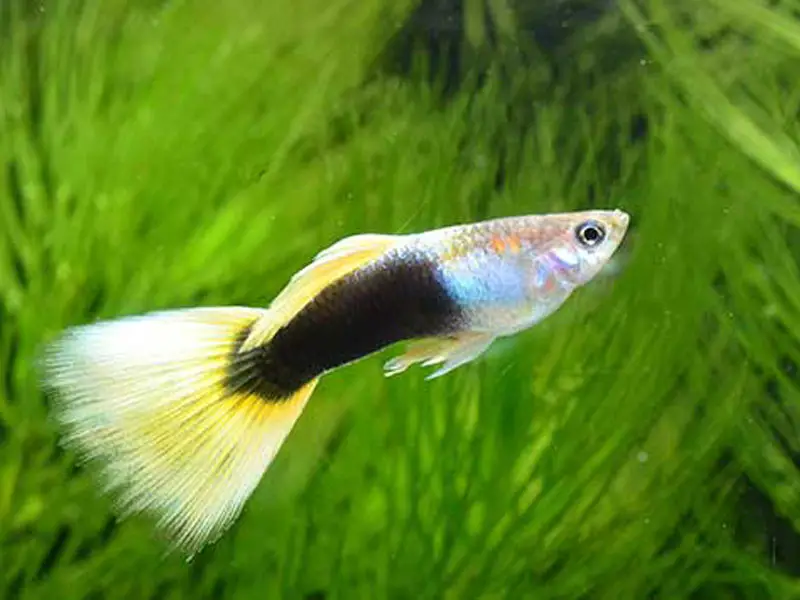
With so many different species of livebearers, their appearance varies greatly, but they start at about 2 inches (5 cm). One thing they all have in common is beautiful and bright color patterns and distinctive fins.
Habitat, and Tank Conditions
Your Livebearers will appreciate a darker substrate (which also provides a nice contrast for their coloration) and lots of decorations–plants, wood, and caves are all good options; just make sure you leave them room to swim.
Livebearers also like a moderate current for their swimming pleasure.
You will need two tanks for breeding livebearers: the main tank and the breeding tank.
Water Conditions
Water parameters vary by species, but in general, you should shoot for
Temperature: upper 60s to the lower 80s°F (18.9-28.3 °C)
DH: 8 to 18
pH: 7.0 to 8.4
What Size Aquarium Do They Need?
You can use a 5-gallon tank minimum for Livebearers. However, because most of them prefer to be kept in groups, I’d aim for a larger tank to prevent overcrowding. Guppies, for example, need 2 gallons of water, so if you have a 20-gallon tank, you can have 10 guppies.
Tank Mates
Barbs, Danios, Rasboras, Rainbowfish, and Tetras are all peaceful fish that do well with most Livebearers. In general, avoid aggressive fish if you’re housing Livebearers.
Keeping Livebearers Together
Although not all Livebearers are schooling fish, they do enjoy being together, so keeping them in groups is a great idea. However, due to the mating situation, I recommend more females than males.
Diet
Livebearers enjoy prepared fish flakes, and also like frozen and live proteins (think shrimp and bloodworms). They also like blanched vegetables and spirulina.
Care
Ich (Ick), Velvet, Fin rot, and Livebearer disease are all possible maladies that can affect livebearers. The best thing you can do is to keep the tank impeccably clean and quarantine any new tank additions. If your fish do fall ill, quarantine and treat them properly before the disease spreads to other fish.
Breeding
Livebearers are super easy to breed, and sometimes, the hobbyist needs to do nothing more than put a male in a tank with a female. Like humans, livebearers give birth to live young, although the gestation period is a much shorter 4 weeks.
—-
Overview of Cichlids
Found mostly in tropical areas, most Cichlids are native to Africa and South America, with some from Asia and Europe.
Cichlids are popular in home aquariums because they are lovely to look at and are active and fun to watch.
Typical Behavior
The most important thing you need to know about Cichlids is that they are aggressive. Providing the right environment and choosing suitable tankmates will mitigate the aggression, but they’re aggressive.
Otherwise, they spend much of the day digging around in the substrate, scavenging for food.
Appearance
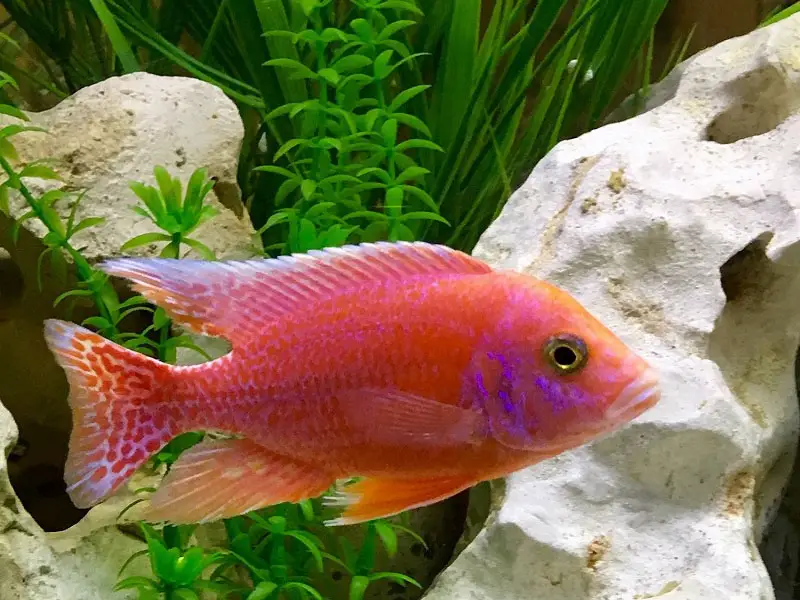
Cichlids have a large size range, from 3 to 15 inches (7.5 to 38 cm). The commonality within their variation is that they all have intense coloring and stunning patterns. Their body shapes are quite varied though; some Cichlids have laterally compressed bodies while others are long and cylindrical.
Habitat, and Tank Conditions
Because they are diggers, they need a soft substrate that won’t scratch or injure them. They need caves and places to hide so they can claim a territory in the tank. Plants are not always the best options for Cichlids since they might dig them up.
Water Conditions
Water parameters vary by species, but in general, you should shoot for
Temperature: 75 to 85°F (24-29 °C)
DH: 12 to 20
pH: 6.0 to 8.6
What Size Aquarium Do They Need?
You’ll need a minimum tank of 30 gallons for Cichlids. However, if you have a larger species of Cichlid, say 7 to 15 inches, you will need a 50-gallon tank.
Tank Mates
Because Cichlids are aggressive, you need to avoid small fish that will surely be eaten. You could choose a free-swimming aggressive fish, such as leopard bush fish. Otherwise, you should choose catfish or other bottom feeders that occupy a part of the tank where Cichlids are not.
Keeping Cichlids Together
You could keep Cichlids together, but avoid multiple Cichlid species in one tank. Also, give them enough space to decrease the chances of infighting.
Diet
Some Cichlid species are carnivores, some are omnivores, and some are insectivores, so their diet will vary by species. In captivity, though, most will eat a varied diet of protein and vegetation.
Care
Like Livebearers, Cichlids are at risk for parasitic infections. Ich, velvet, and flukes are all common in Cichlids, but the danger of these infections can be reduced if you test the water chemistry regularly to make sure that ammonia, nitrite, and nitrate levels are within acceptable limits and perform partial water changes every two weeks.
Breeding
Livebearers are super easy to breed, and sometimes, the hobbyist needs to do nothing more than put a male in a tank with a female. Like humans, livebearers give birth to live young, although the gestation period is a much shorter 4 weeks.
Are Hard Water Fish Appropriate for your Aquarium?
A hard-water aquarium is ultimately easier to maintain, and in many ways better for your fish. As long as they have time to acclimate to the water parameters and you follow the specific recommendations for each hard water species, your fish should thrive and have a high quality of life.
Remember that even fish that are accustomed to soft water in the wild have likely been born and bred in a hard, alkaline environment, so you shouldn’t have issues.
Where do you fall in the hard water/soft water debate? Drop me a note in the comments below…

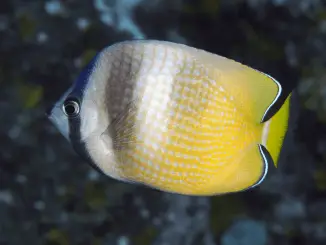
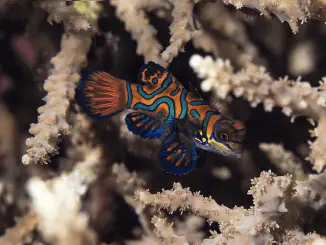
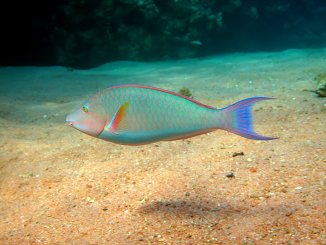
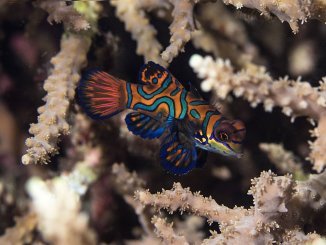
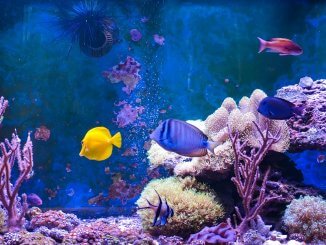
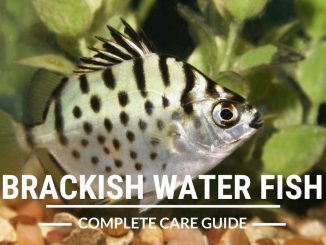
Be the first to comment